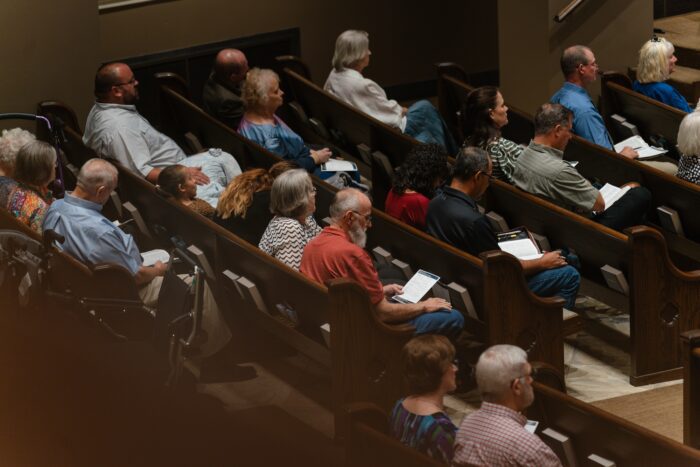Preaching Old Testament stories can feel like a challenge. Yet, it’s also an incredible opportunity, because these narratives aren’t just history lessons—they’re carefully crafted stories packed with meaning. By following the natural flow of the story you can bring the text to life in a way that grabs your listeners’ attention and connects them to God’s truth. Paying attention to the structure of the story opens up even more layers of insight. In this article, we’ll pay attention to the structure of the narrative story in 1 Samuel 17, and share practical tips for crafting sermons that stay true to the text while keeping your audience engaged. When you let the story lead, you invite people into the bigger story of God’s work in the world—and that’s where the real power lies!
When interpreters talk about the “structure” of a narrative, they mean one should focus on the narrative design and flow of the story—its plotline, setting, characters, and resolution. This helps preachers follow the story’s natural rhythm rather than imposing an external framework. Some of the key moments to look for are the rising action, conflict, climax, and resolution. These points in the narrative can translate into the sermon points for preaching to a congregation.
First the preacher must outline the passage according to its own narrative structure. At this point it is enough to describe what is happening in the text. At a later point, the preacher can connect what is going on in the text to the congregation, so as to produce a preaching outline (which is a separate document). Examining the story of David and Goliath in 1 Samuel 17, the preacher might arrive at a descriptive outline like the one below:
1. Introduction: 1 Samuel 17:1–11
- Key Idea: Highlight the overwhelming challenge posed by Goliath and Israel’s fear, setting the stage for God’s power to be revealed.
2. Rising Action: 1 Samuel 17:12–40
- Key Idea: Introduce David as a faithful and unlikely hero whose confidence in God sets him apart.
3. Climax: 1 Samuel 17:41–49
- Key Idea: Show how David’s declaration of faith and God’s power leads to victory.
4. Falling Action: 1 Samuel 17:50–54
- Key Idea: David’s victory emboldens Israel, showcasing how faith can inspire others.
5. Resolution: 1 Samuel 17:55–58
- Key Idea: The conclusion shifts focus to David’s identity, hinting at his future as king.
Once these elements of the plot have been identified, the preacher can turn to other interpretive tools to see how the narrative gives weight to certain moments or themes. For example, in 1 Samuel 17:4-7, the narrator describes the appearance of Goliath and his weapons to emphasize the size and seriousness of the danger facing Israel. In contrast, the description of Goliath with the description of David in 1 Samuel 12-15. David is the youngest, and not even a soldier. He is more of a messenger. The narrator uses repetition of the way the Israelites are frightened (verse 11, 24) and even the speech of Saul (verse 33). That fearful attitude is not present in David’s tone of speech or his actions.
The story does more than just inspire God’s people to be strong and courageous (Joshua1:6). It points us to another from the line of David who would defeat an even greater foe in an unlikely way. Jesus conquered sin through his death on the cross and resurrection three days later. Just as the Israelites had the chance to conquer the Philistines, believers in Christ can be set free from sin. Thus, the preacher needs to weave the point of the narrative into the salvation story of God, and communicate how the story calls believers to live in the way they craft a preaching outline. For this particular text, it might look something like:
- Facing Giant Challenges
- Highlight the overwhelming challenge posed by Goliath and Israel’s fear, setting the stage for God’s power to be revealed.
- What giant challenges do you face today? Is it at work? Is it with a child or family member? Is your giant challenge money? We all have one.
- Focus on God, not your status in comparison to the challenge
- Introduce David as a faithful and unlikely hero whose confidence in God sets him apart.
- God can use ordinary people like you. The point is to focus on God, and trust him more than you fear the challenge.
- Victory comes by trusting the Lord
- Show how David’s declaration of faith and God’s power leads to victory.
- How can we trust God? How can we be faithful to the last thing he gave us to do? How can we live a purposeful life for Jesus in the midst of a challenge?
- Faith Inspires Others
- Key Idea: David’s victory emboldens Israel, showcasing how faith can inspire others.
- Our faith can encourage others to trust God. Who is watching our faith in action? Family? Co-workers? Teammates?
- David’s significance points to Christ’s significance
- Key Idea: The conclusion shifts focus to David’s identity, hinting at his future as king.
- This battle is more than a victory, it points to God’s plan for David to lead Israel. Biblically speaking, David points us to Christ. Faith in Jesus results in victory over death and sin, and it brings eternal life.
Finally, don’t overlook the characters—they’re the heart of every story. Old Testament narratives are full of relatable people who drive the plot and reveal its message. Ruth’s unwavering loyalty, Jonah’s reluctant obedience, or Joseph’s faith in God despite years of betrayal and hardship—all these characters bring theological truths to life in vivid ways. By helping your congregation connect with these individuals, you make the story personal and show how God’s truth speaks into their lives today. Preaching isn’t just about explaining the text—it’s about making it come alive. That process of making the text come alive will be the subject of the next article on the Spirit of Old Testament Narratives.








